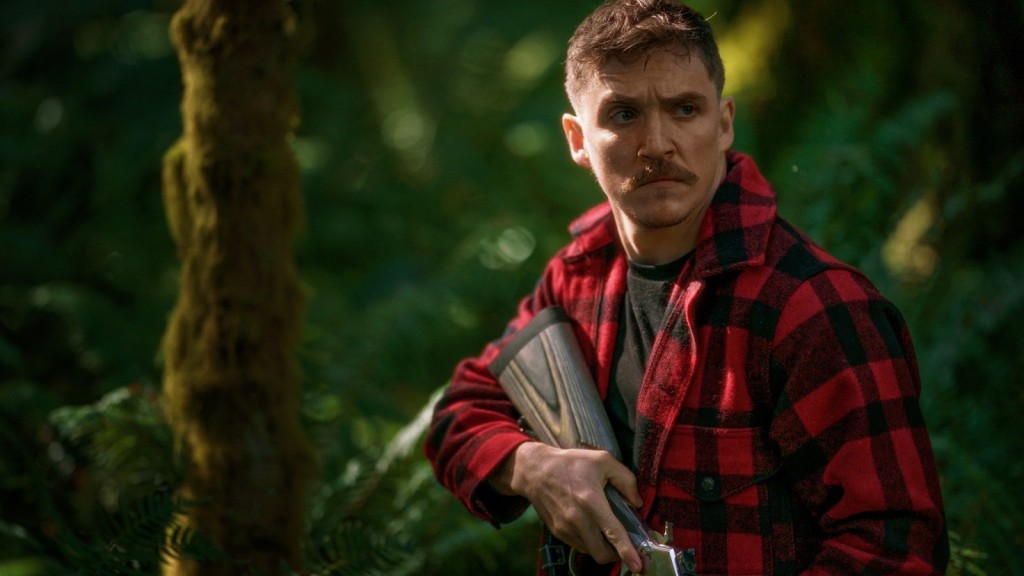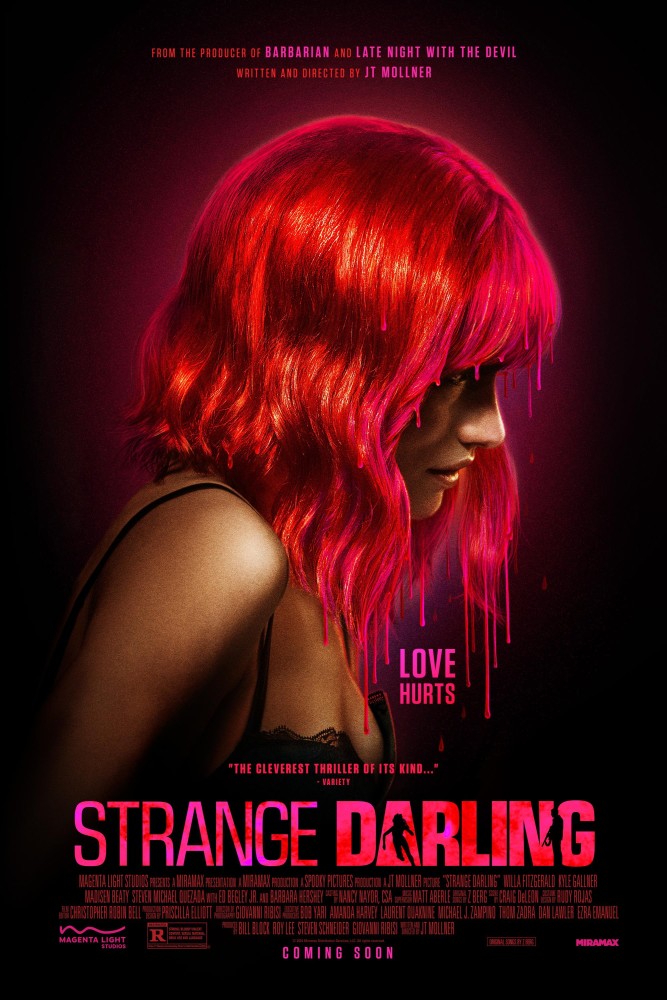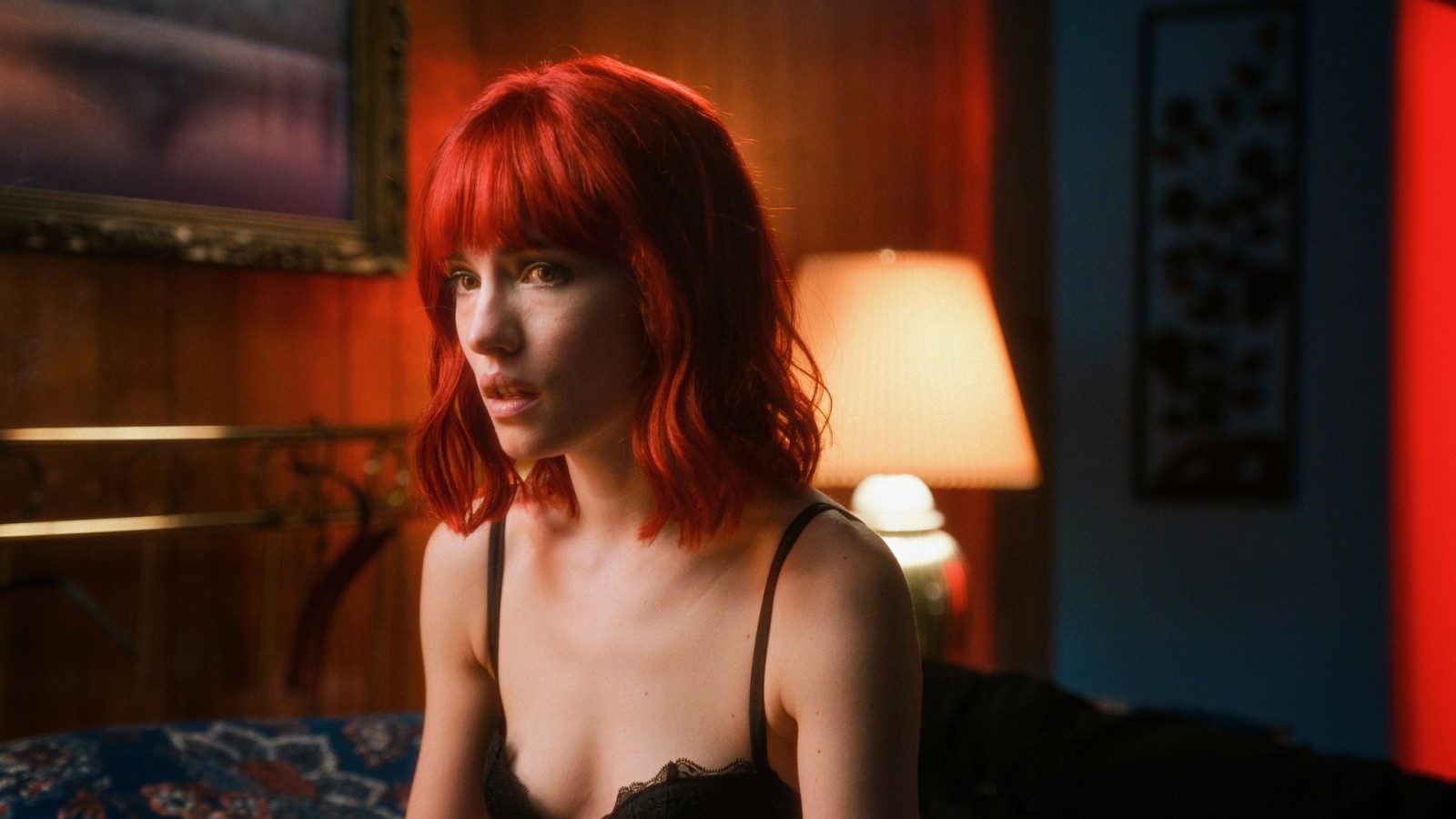By Dolores Quintana
J.T. Mollner’s film Strange Darling is not what it seems. While it is, on the surface, a “cat and mouse” thriller, it is also a not unsympathetic portrait of psychosis and severe mental illness. The film stars Willa Fitzgerald, Kyle Gallner, Barbara Hershey, and Ed Begley Jr and was written and directed by J.T. Mollner, the writer for the long-awaited adaptation of Stephen King’s pseudonymously written novel The Long Walk and director of Angels and Outlaws. One very interesting part of his life is that for three months each year, during the Halloween season, Mollner takes time off to help his family run the well-known haunt, The Freakling Brothers, in Las Vegas. It was shot by the director of photography and respected actor Giovanni Ribisi.
The film is being screened at the Alamo Drafthouse and AMC Theaters but has a weeklong run at The Vista Theater in Hollywood and is being shown with a newly struck 35mm print and the Vista’s great sound system. I recommend making the trip to The Vista, a great theater to watch such a wonder of cinematography. You can purchase tickets at The Vista here.

The film is a fractured narrative divided into six chapters and an epilogue. It is set up from the beginning as a true crime story. It also starts with the onscreen notice that the film was shot with 35mm film stock, and its brilliant hues attest to this. Visually, the film is a feast for the eyes of bright primary colors that is shot expertly and with great care. During a Q&A at Kodak House on August 15, Mollner and Ribisi discussed the decisions that they creatively made to make the film as beautiful as possible, and every inch of the film shows the work they put into it, with film from Kodak and special lenses.
In the spirit of not spoiling the film, I will discuss it as much as possible without revealing the twists and turns. The film is not overly downbeat despite the story of a mentally ill serial killer whose psychosis has convinced them that demons are real. It is quite funny at many points of the narrative, either due to the ridiculousness of the situation that the characters find themselves in or just the quirks of the characters themselves.
Barbara Hershey, who is absolutely luminous, and Ed Begley Jr. play a lovely if paranoid couple to whom one of the characters goes for help. Their curious Sunday breakfast ritual shows that not everyone in the world is as normal as they think they are.
Willa Fitzgerald’s The Lady is a character somewhat similar to Hunter Shafer’s Gretchen in Cuckoo. She is a woman of seeming fragility who is much stronger than she looks. She has a vulnerability that is her strongest asset in the film. Kyle Gallner is perfect as the somewhat confused man who gives off vibes of both likeability and an offputting undertone. Can you trust him? You’re never quite sure; that is the excellence of Gallner’s work.

The film also talks about the leap of trust women must take to open up to men. Women can never be sure if they are safe, especially when they are intimate with a partner, which is also one of the times when a woman is most vulnerable.
I watched the film twice and sank deeper into the narrative on the second watch. It’s a film that benefits from a second watch and one you must pay attention to. There is action, gunplay, and gore, but the core of the film rests in the psychology of the characters. If you don’t want to read any deeper than the surface, it is still very entertaining to watch. But when you realize its secret, it sinks deeper into you. It shows, through the actions of the serial killer, that someone who is psychotic does not recognize that they are insane. It never says what the character’s problem is, but I suspect it might be schizophrenia.
While watching the character, you see the reality of the other characters juxtaposed with their frightening and irrational actions. From the intellectual standpoint, we have had it explained that a person with mental illness does not understand what they are doing is counter to the reality of everyone else, but Strange Darling shows a moment when a mentally ill person realizes that they are the problem. It’s very instructive and heartbreaking.
Strange Darling is filled with shocks, surprises, humor, and a deep understanding and sympathy for humanity, including the human that would usually be considered the villain. It is a beautiful and ethereal ode to humanity and the roots of human evil.












